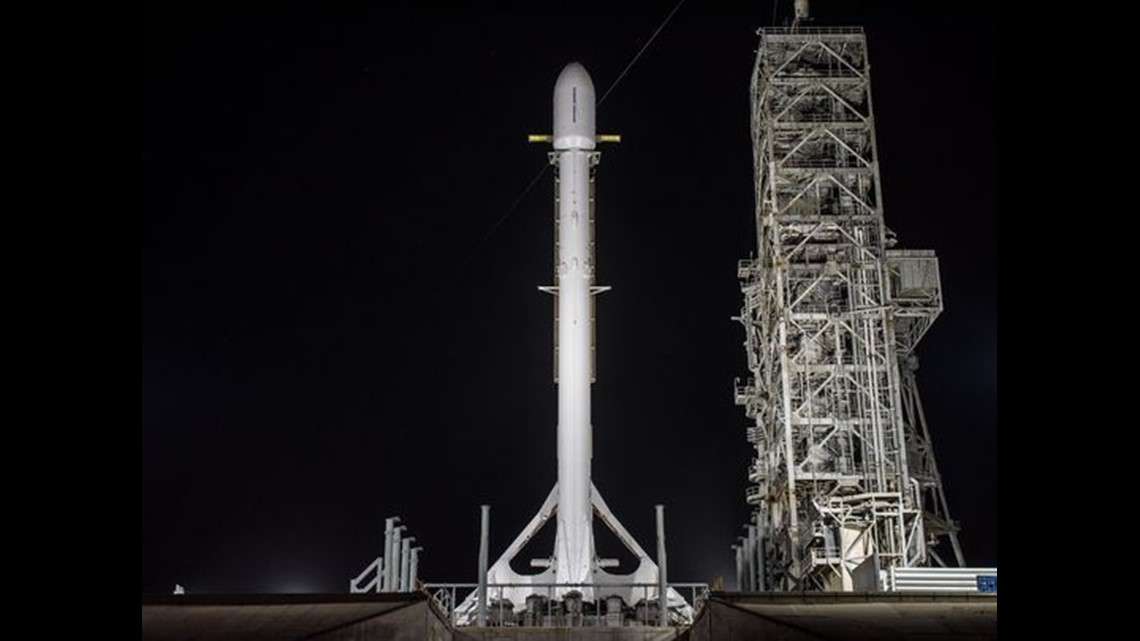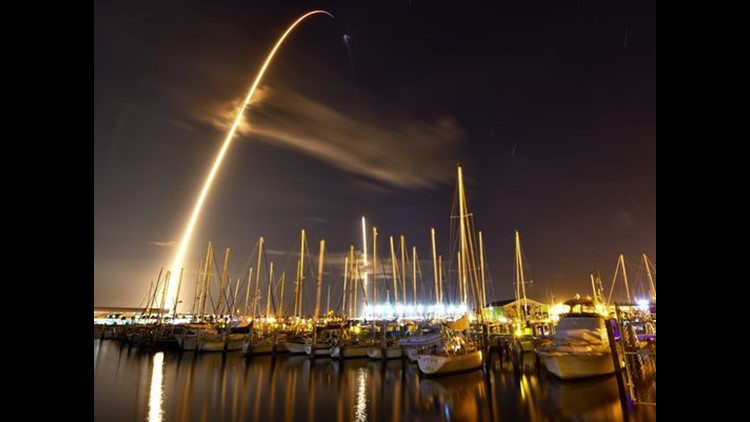A secret government satellite mission code-named Zuma zoomed into orbit from Cape Canaveral Sunday night atop a SpaceX Falcon 9 rocket.
After the 8 p.m. ET blastoff from Launch Complex 40, the rocket booster zoomed right back to Cape Canaveral Air Force Station, announcing its return with ear-splitting sonic booms as it touched down on legs south of the launch site.
Skies were clear enough for viewers on the Space Coast to see the rocket's two stages separate, briefly producing a sort of laser light show in the clouds, then follow the first stage as it flew back to Landing Zone 1.
A series of engine firings to flip it around and slow its plunge through the atmosphere culminated in SpaceX's 21st rocket landing in just over two years.
SpaceX cut off its broadcast of the mysterious Zuma mission a few minutes into the flight to protect its secrecy.
Contracted by Northrop Grumman for an unspecified U.S. agency, the mission was known to be headed into a low Earth orbit, roughly 250 miles up, on a northeasterly trajectory angled about 50 degrees relative to the equator.
Amateur satellite trackers who specialize in tracking classified missions suspected Zuma may be an experimental spacecraft testing new technologies, possibly sensors for watching close approaches between spacecraft.
One theory floated was that the mission might be connected to one SpaceX launched into a similar orbit last May for the National Reconnaissance Office.
That mission last summer was observed flying close to the International Space Station, at a time when two U.S. cargo craft arrived or departed.
At one point, when Zuma was scheduled to launch last November, both the NRO satellite and the ISS were on track to fly over Cape Canaveral during or very near Zuma's launch window. That would place Zuma near the others once in orbit, perhaps not by coincidence.
But the launch was delayed. SpaceX said it needed to review a potential issue with the Falcon 9 rocket's nose cone that cropped up in testing.
For Sunday night's launch time, the orbital tracks of those three spacecraft — Zuma, the NRO satellite and the ISS — were no longer closely aligned, suggesting the missions might not be related after all.


SpaceX on Sunday night picked up where it left off in 2017, its best year yet with 18 launches and no failures.
The company aims to top that total this year, flying from three launch pads — at Cape Canaveral Air Force Station, Kennedy Space Center and Vandenberg Air Force Base in California.
Buzz is building for an upcoming test-firing of 27 Merlin engines powering the new Falcon Heavy rocket, which features a first stage of three Falcon rocket boosters strapped together.
CEO Elon Musk says the heavy-lift launcher's debut test flight — carrying his own Tesla Roadster sports car into space — is possible from KSC before the end of this month.
SpaceX also has two more satellite missions that could fly in late January: a Spanish Earth observation craft launching from California, and a European communications satellite from Cape Canaveral.
Both of those will launch on used Falcon 9 boosters, as SpaceX continues to re-fly rockets it has landed on previous missions. So far, five “flight proven” boosters have flown for a second time.
United Launch Alliance, meanwhile, is close to starting its 2018 launch campaign with a pair of launches from two coasts.
The Boeing-Lockheed Martin joint venture is targeting a 4 p.m. ET Wednesday launch from California of a classified NRO mission on a Delta IV rocket, followed by a Jan. 18 launch of an Atlas V carrying a U.S. missile warning satellite from Cape Canaveral.
The 45th Space Wing on Tuesday is scheduled to deliver its year-ahead forecast of local launch activity to the National Space Club Florida Committee. The Wing could potentially support more than 30 launches.
Follow James Dean on Twitter: @flatoday_jdean



